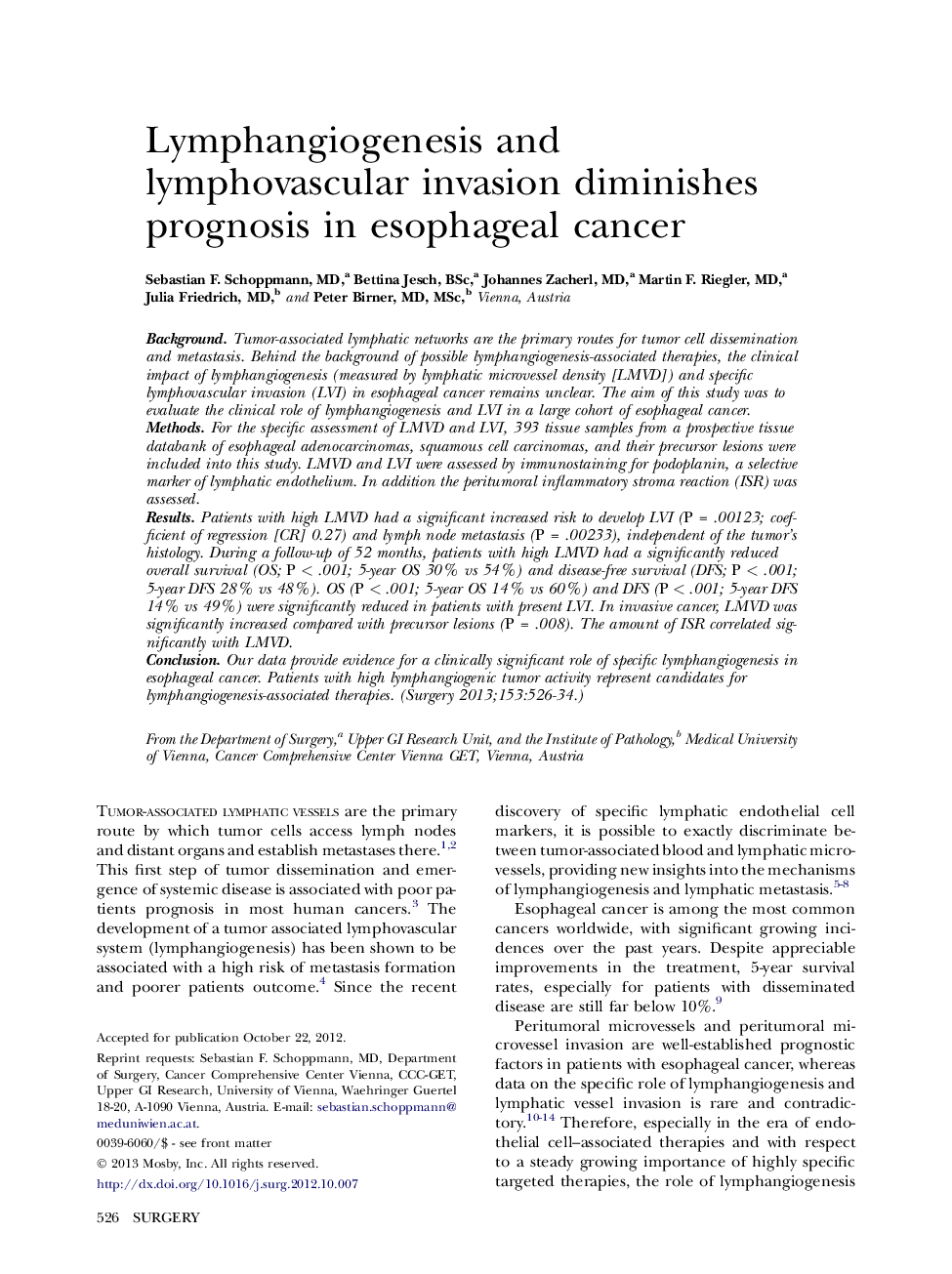| Article ID | Journal | Published Year | Pages | File Type |
|---|---|---|---|---|
| 4307771 | Surgery | 2013 | 9 Pages |
BackgroundTumor-associated lymphatic networks are the primary routes for tumor cell dissemination and metastasis. Behind the background of possible lymphangiogenesis-associated therapies, the clinical impact of lymphangiogenesis (measured by lymphatic microvessel density [LMVD]) and specific lymphovascular invasion (LVI) in esophageal cancer remains unclear. The aim of this study was to evaluate the clinical role of lymphangiogenesis and LVI in a large cohort of esophageal cancer.MethodsFor the specific assessment of LMVD and LVI, 393 tissue samples from a prospective tissue databank of esophageal adenocarcinomas, squamous cell carcinomas, and their precursor lesions were included into this study. LMVD and LVI were assessed by immunostaining for podoplanin, a selective marker of lymphatic endothelium. In addition the peritumoral inflammatory stroma reaction (ISR) was assessed.ResultsPatients with high LMVD had a significant increased risk to develop LVI (P = .00123; coefficient of regression [CR] 0.27) and lymph node metastasis (P = .00233), independent of the tumor’s histology. During a follow-up of 52 months, patients with high LMVD had a significantly reduced overall survival (OS; P < .001; 5-year OS 30% vs 54%) and disease-free survival (DFS; P < .001; 5-year DFS 28% vs 48%). OS (P < .001; 5-year OS 14% vs 60%) and DFS (P < .001; 5-year DFS 14% vs 49%) were significantly reduced in patients with present LVI. In invasive cancer, LMVD was significantly increased compared with precursor lesions (P = .008). The amount of ISR correlated significantly with LMVD.ConclusionOur data provide evidence for a clinically significant role of specific lymphangiogenesis in esophageal cancer. Patients with high lymphangiogenic tumor activity represent candidates for lymphangiogenesis-associated therapies.
